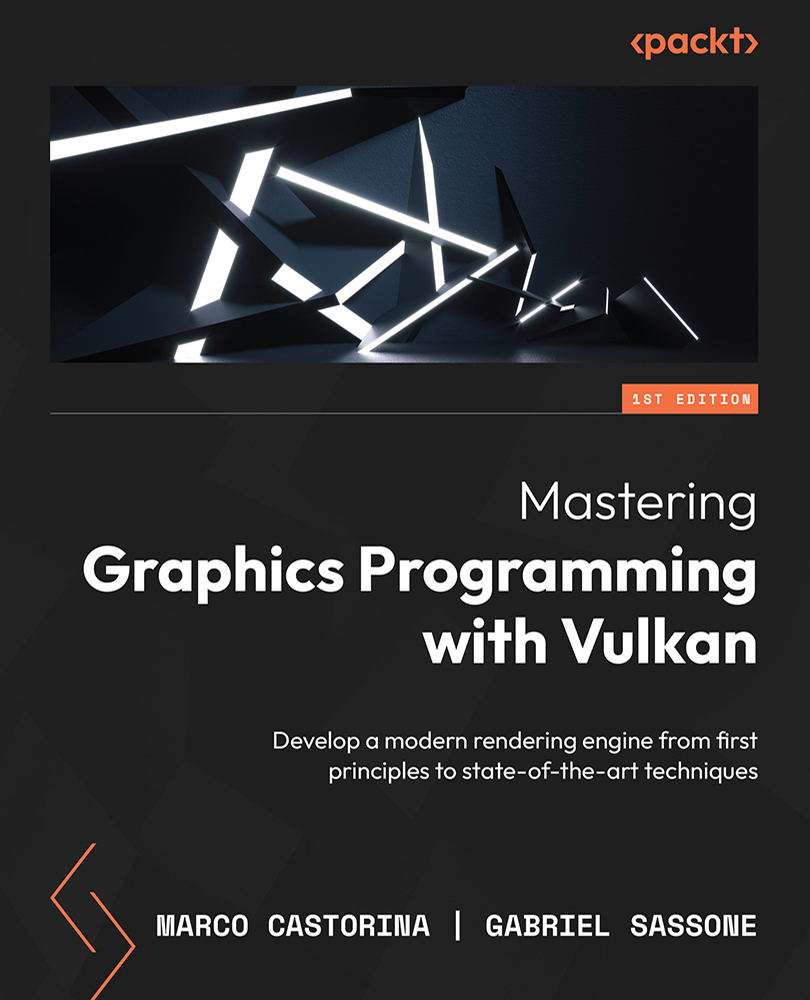Introduction to indirect lighting
Going back to direct and indirect lighting, direct lighting just shows the first interaction between light and matter, but light continues to travel in space, bouncing at times.
From a rendering perspective, we use the G-buffer information to calculate the first light interaction with surfaces that are visible from our point of view, but we have little data on what is outside of our view.
The following diagram shows direct lighting:

Figure 14.2 – Direct lighting
Figure 14.2 describes the current lighting setup. There are light-emitting rays, and those rays interact with surfaces. Light bounces off these surfaces and is captured by the camera, becoming the pixel color. This is an extremely simplified vision of the phenomena, but it contains all the basics we need.
For indirect lighting, relying only on the camera’s point of view is insufficient as we need to calculate how other lights and geometries...


























































